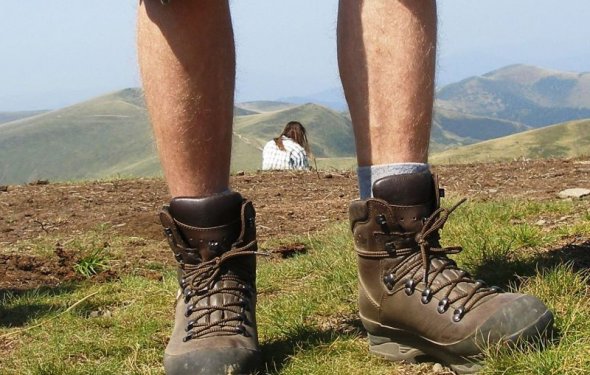What Shoes To Choose To Go To The Mountain

With regard to the selection of shoes for summer walks in Globus, each instructor usually has a vision. Someone's saying that there's a need for special tracked mountain boots, someone's saying that you can even get in the keds.
I'll try to describe my vision.
For starters, we'll have a few myths:
1. The boots don't float - they don't, the Carpathians don't swap the leaf iron.
2. Burns are the best. Travel shoes - Absolutely not. They look dangerous, that's all. The Berps don't wipe their legs with baby + steam (especially "sock").
3. It's like walking, like sports, so the ceds are absolutely not. In the ceds, the thin sole, the minimum will be broken nails, every smallest stone on the road in half a day in the mountains, you'll feel brains, not that stop + ceds are terribly slipping in the rain.
What should I do?
As the primary shoes for the summer Carpathians, it's better to pick shoes, that's light-tracking. There are several reasons for this:
- First, the boot holds the holenostop, the chance to turn a leg in it is much less than in the shoes.
- Second, small-scale grasses, muds after rain, roses on the field - you're not disturbed, you're going to be profitably different and proud to go straight, not jumping a goat, afraid of washing your legs on your toe.
- third--- bushes and other crumbs in the leg of the camuse-- you don't mind.
- Fourthly, if the rain isn't big, your feet will be dry.
Funny shoes.
I always recommend that we take a shift shoe:
1. Scapes / Sandalia. Slaps will need to be washed in the river; they can be wrapped tonight to get out of the tent in the rain; if they're warm, they can just be wrapped up tonight; slaps can be put on for lunch while your shoes are dry on the sun and your feet are dry at that time. And finally, in the bladders, they're going to cross the river, so the backpack can cut their legs to the stones. By the way, the best slaps are sandals because they won't fly off the river.
2. Enhanced sneakers. It's worth two cases: two to four days, a backpack light, a shift tonight (that is, boots even if there's no rain wetting). And the second case (primary): if you're not sure that the main shoe will survive the entire trail; you have new, unstable shoes. The basic requirement for shifting crosses is that they'll survive if anything, the whole trip.